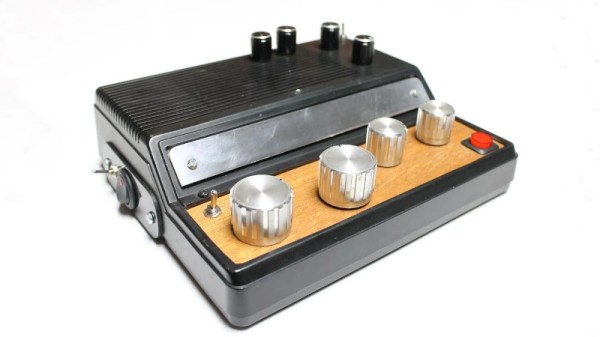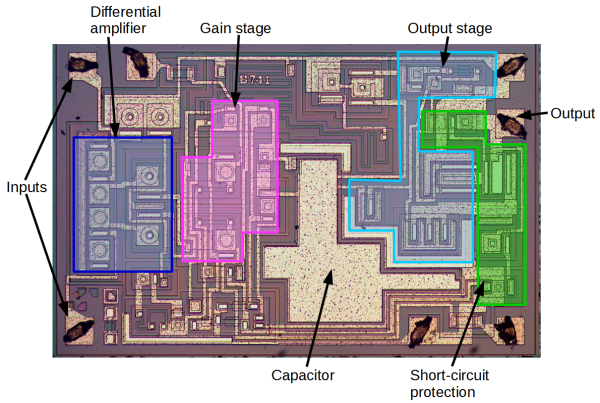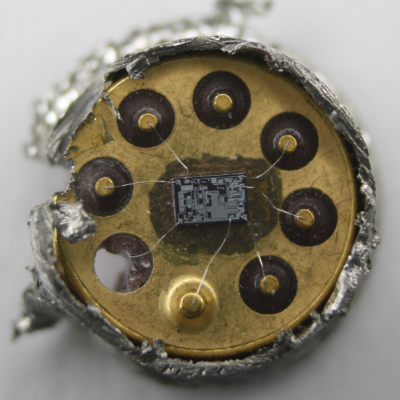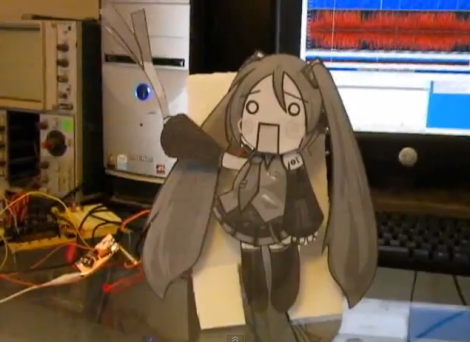First of all, we’d like to give a big shout-out to [Afrotechmods]! After a long hiatus, he has returned to YouTube with an awesome new video all about op-amp characteristics, looking at the relatively awful LM741 in particular. His particular way of explaining things has definitely helped many electronics newbies to learn new concepts quickly!
Operational amplifiers have been around for a long time. The uA741, now commonly known as the LM741, was indeed an incredible piece of technology when it was released. It was extremely popular through the 1970s and onward as it saved designers the chore of designing a discrete amplifier. Simply add a few external components, and you have a well-behaved amplifier.




 Rather than risk the boiling acid method commonly used to decap epoxy-potted ICs, [Ken] wisely chose a TO-99 can format to attack with a hacksaw. With the die laid bare for his microscope, he was able to locate all the major components and show how each is implemented in silicon. Particularly fascinating is the difference between the construction of NPN and PNP transistors, and the concept of “current mirrors” as constant current sources. And he even whipped up a handy interactive chip viewer – click on something in the die image and find out which component it is on the 741 schematic. Very nice.
Rather than risk the boiling acid method commonly used to decap epoxy-potted ICs, [Ken] wisely chose a TO-99 can format to attack with a hacksaw. With the die laid bare for his microscope, he was able to locate all the major components and show how each is implemented in silicon. Particularly fascinating is the difference between the construction of NPN and PNP transistors, and the concept of “current mirrors” as constant current sources. And he even whipped up a handy interactive chip viewer – click on something in the die image and find out which component it is on the 741 schematic. Very nice.










